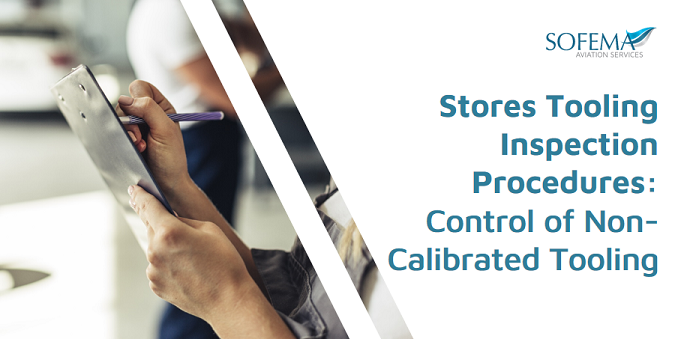Sofema Aviation Services (SAS) www.sassofia.com considers best practice related to stores tooling inspection procedures – Control of Non-Calibrated Tooling
Considerations Related to Tooling which is not subject to calibration but requires detailed Inspection.
Introduction
The Partial failure of a Boot Strap Kit during the replacement of a CF6-50C2 Wing Engine could have resulted in an expensive accident – fortunately neither the Engine nor any personnel were damaged or injured.
However, it highlighted that in this particular organisation there was no inspection performed on non-calibration tooling and it was all treated as “on condition” – means use it until it breaks then fix or replace.
The potential damage to a very expensive engine served to highlight the exposure related to the effective management of tooling & equipment. After Investigation it was decided that all such tooling & equipment would be returned to stores as “unserviceable” pending inspection.
Such Inspection would be performed by trained and authorised personnel (including stores staff).
Initial Inspection/ Acceptance of Tools and Equipment
Approved Stores Inspection Staff are responsible for receiving the incoming tools and equipment.
All incoming tools or equipment shall be inspected for:
- Shipping damage
- State of preservation
- Conformity to type / specification of the purchase order
- Accompanying documents demonstrating the quality, specification, and calibration status
- User Instructions Manual and / or Maintenance Manual
All the tools and equipment accepted by the receiving inspection process shall normally be marked in a permanent way (engraving, identification plates, etc).
The marking codes shall be unique and shall be registered within the Stores Tooling Control System.
Examples of Tooling & Equipment potentially subject to Return to Stores Inspection include:
- Engine Change Boot Strap Kit
- Lifting Equipment
- Ropes, Harnesses & Chains
- Aircraft Maintenance Lighting Equipment
- Fuel Tank Specialised Lighting
- Fuel Tank Personnel Breathing Equipment
The above list is representative only and is provided for indication only.
What does a Return to Stores Tooling Inspection Consider?
- For each tool / appliance or group / type or item a checklist should be created
- The purpose of the return to stores inspection checklist is to ensure that the inspection process is performed to a common standard.
- Carefully Inspect the Tooling / Equipment against the following criteria:
o Any signs of damage to any part of the Tooling / Equipment
o End Fittings fully functioning.
o No Fraying of any Lifting Harness / Rope or Wire
o Electrical Wiring for Serviceability & Integrity
o Security of Electrical Connectors and Connections
o Signs of Stress, Burning or Discolouration
o Apply Preservation (If required)
Next Steps
Sofema Aviation Services provides the following 1-day training course covering the essential areas of the Part 145 Tooling Store
Please see the following link or email team@sassofia.com
Part 145 Stores Tooling Control, Inspection Procedures & Best Practice – 1 Day
Tags:
Aircraft Tooling, aviation, Aviation Tooling Store, EASA Part 145, EASA Part 145 Stores, Non-Calibrated Tooling, Part 145 Tooling Store, SAS blogs, Tool Store Environment, Tooling Inspection




